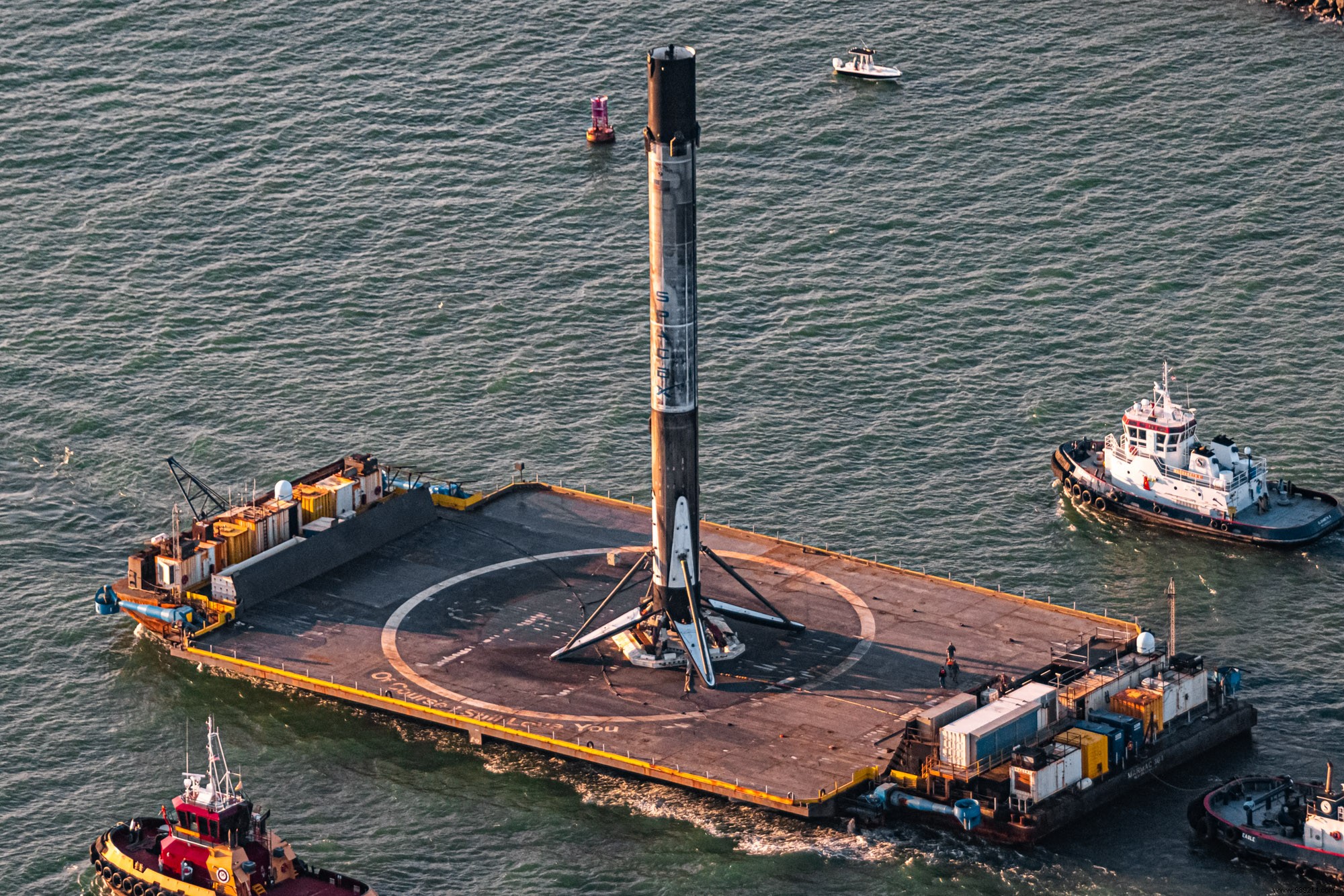SpaceX could never have widened such a gap with its competitors if the company's engineers had not succeeded, in 2016, in the feat of landing their Falcon 9 booster at sea. Here's why.
A little over five years ago, on April 8, 2016, SpaceX achieved a feat:landing a Falcon 9 booster on a platform at sea, off the coast of Florida (the video is visible at the end of the article). The milestone of 2015, with this first successful landing on solid ground, near the launch pad, was already exceptional, but this one was perhaps even more so.
On the one hand, because this touch was naturally more complicated on a technical level (the movements of the ocean are to be considered). And on the other hand, because without this water landing capacity, SpaceX could not offer its current services.
You've probably noticed that during a launch a rocket gradually tilts from a vertical to a horizontal orientation as it prepares to launch. release its second stage on an orbital trajectory.
At this point, you then need tons of fuel to hope to reverse course and return to the launch site. To save money, it is actually much more interesting to follow a parabolic arc to land hundreds of kilometers from the launch site. Then you manage to come back.
Performance data will tell you that. A Falcon 9 rocket that lands on a drone at sea can indeed liftabout 5.5 tons of payload in geostationary transfer orbit, compared to only 3.5 tonnes for a rocket landing at the launch site .

In concrete terms, if SpaceX had not figured out how to land its boosters on platforms at sea, the company would have eliminated approximately 40% of its lifting capacity , which would have removed the inherent advantages of reusing his rockets.
This is why SpaceX has favored landings in the Atlantic for the past five years. Note that almost ten years ago, Blue Origin patented this landing concept. SpaceX then challenged this patent in court and won.
Since then, the company has succeeded in nailing nearly sixty water landings with its Falcon 9 first stages. And since the beginning of 2021, all launches have been operated with veteran boosters (having already flown several times). In this way, the company connects the missions at considerably reduced costs.
Blue Origin, on the other hand, has yet to launch a single orbital rocket let alone land one. Jeff Bezos did retrofit and name a recovery ship, named Jacklyn, but it's unlikely to catch a rocket until 2023, at the earliest.